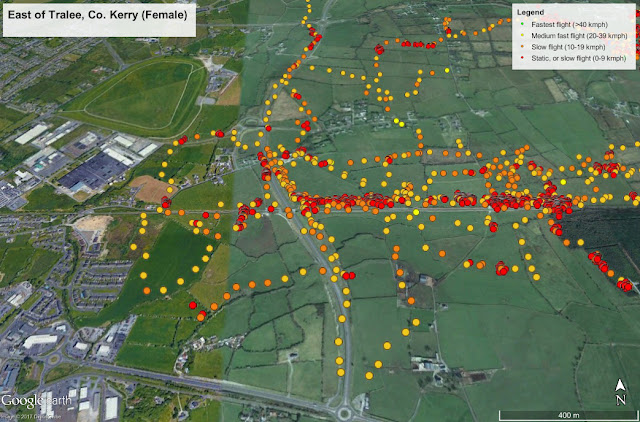Some worthy birds of late, not of themselves worth a blog post, but thrown in together make for a good helping of birder's bread and butter. Good staples, almost filling and somewhat wholesome, but you're not going to be contacting the Michelin Star crowd just yet...
Brambling, Trabeg, 1st November, 2017 (M.O'Clery).
To continue the bread and butter analogy, these beautiful birds are more like a good skim of jam on the bread. Bit of a treat really to get one in amongst the plainer regulars.
A difficult species to see each year in Kerry if you are one of those birder sub-species, the Year Lister. Most are seen singly or in two or threes in autumn, much more rarely in flocks of up to 50 in winter.
Brambling, Trabeg, 1st November, 2017 (M.O'Clery).
Brambling, Trabeg, 1st November, 2017 (M.O'Clery).
Buzzard, Rough Point, 29th October, 2017 (M.O'Clery).
In the 'bread and butter' stakes, Buzzard is actually melted cheese on toast. Not a particularly rare or unusual treat, always satisfying, yet leaves you looking for more.
They're still not that common in Kerry, with about three to five pairs breeding in east and north Kerry, and with more typically recently, a fair scattering of records in autumn, when young birds disperse into the rest of the county. There were about ten records from the Dingle Peninsula alone this autumn.
Buzzard, Rough Point, 29th October, 2017 (M.O'Clery).
Slavonian Grebes, Sandy Bay, 1st November, 2017 (M.O'Clery). Three were present.
These grebes are really just like cheap white bread, a thin sprinkling of sugar on top, the whole lot folded in half and squashed flat. Rarely satisfying, but they'll do until you get something better.
Pintail and Wigeon, Inch 30th October, 2017 (M.O'Clery).
The graceful male Pintail and handsome male Wigeon are those posh sandwiches you might get at a gathering - white bread, egg and onion filling, crusts cut off, cut into neat triangles and beautifully presented on a plate with a paper doilie. Matching napkins.
About 80 Pintail were present at Inch, not a bad count for Kerry and the main wintering flock in the county. The 3,500 Wigeon present were an impressive sight.
Gull, Rough Point, 22nd October 2017 (M.O'Clery).
A slightly large-looking, slightly heavily-marked, but not that distinctively different from other Herring Gulls... although it might, or might not be an Argentatus, the Scandinavian race... or whatever.. I just lost interest.
This gull is the burnt toast scrapings in the sink that then get washed into the plug hole where they expand and block the plug, forcing you to reach in to clear the whole sorry, soggy mess. The charred remains of the toast is now inedible anyway, and you spot the rest of the loaf has got bluemould on it so you have to bin the lot. Argentatus? Probably not, but who cares?
We need some artisan croissants... or even better, some Gruyere Focaccia, or French date-and-walnut Cob... NOW!




































